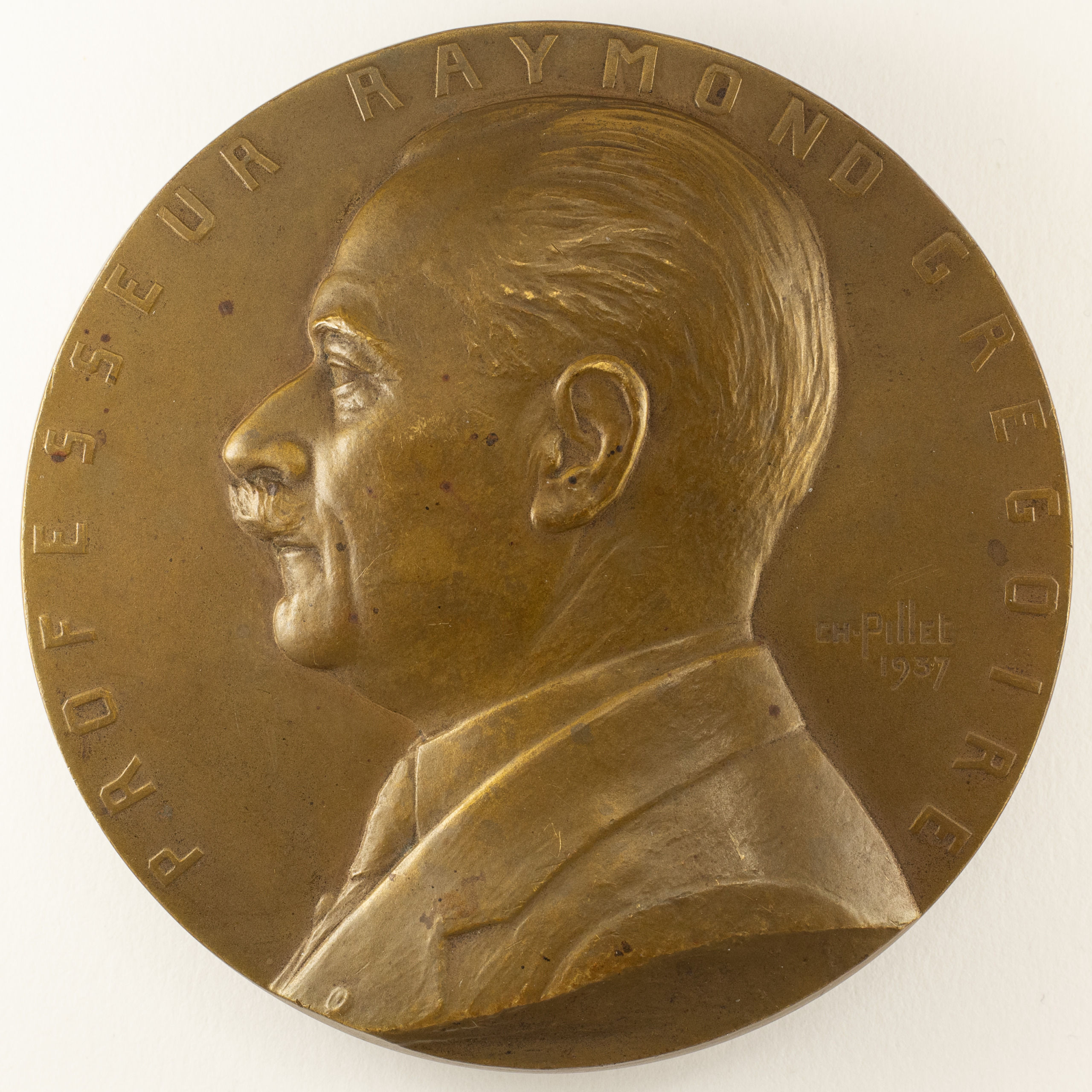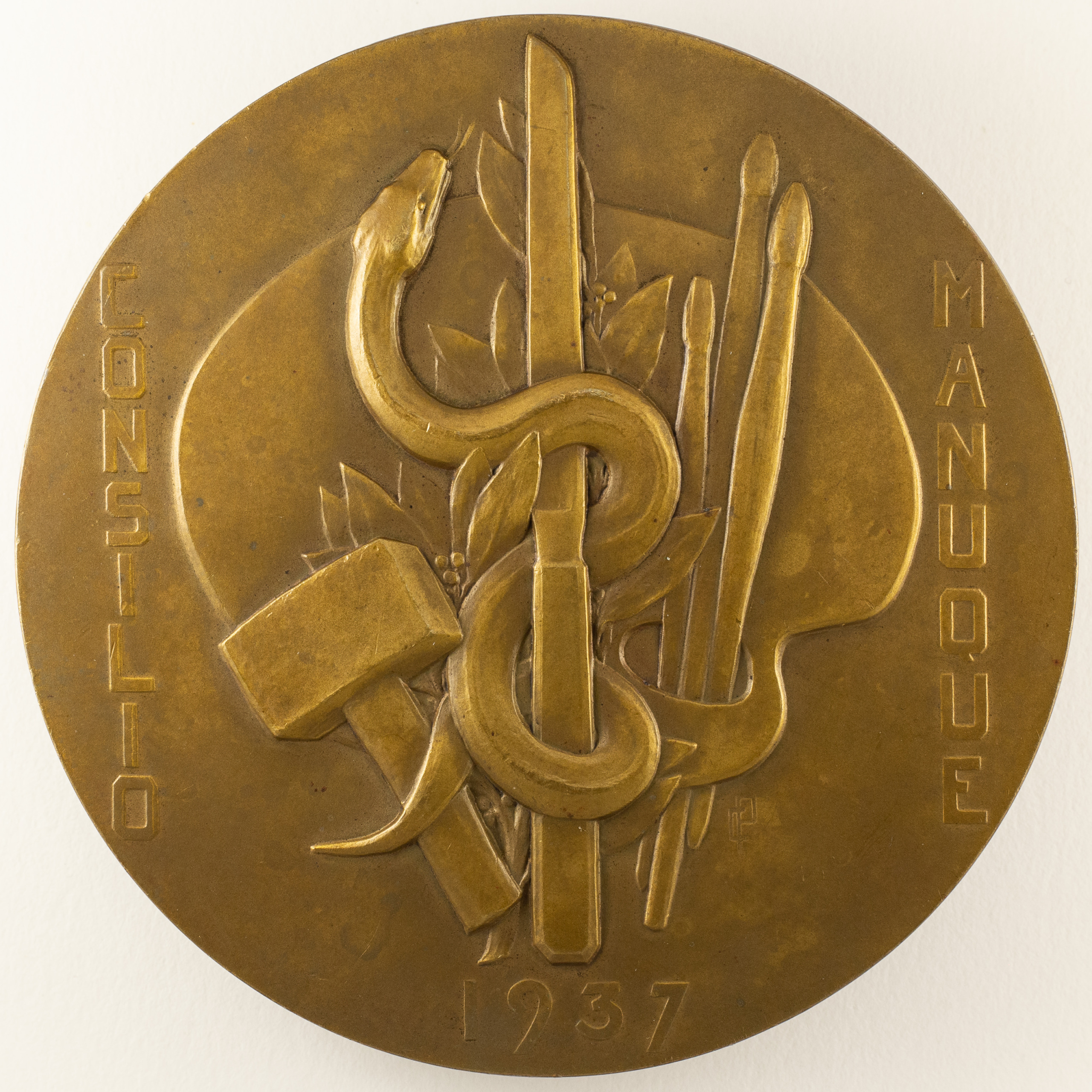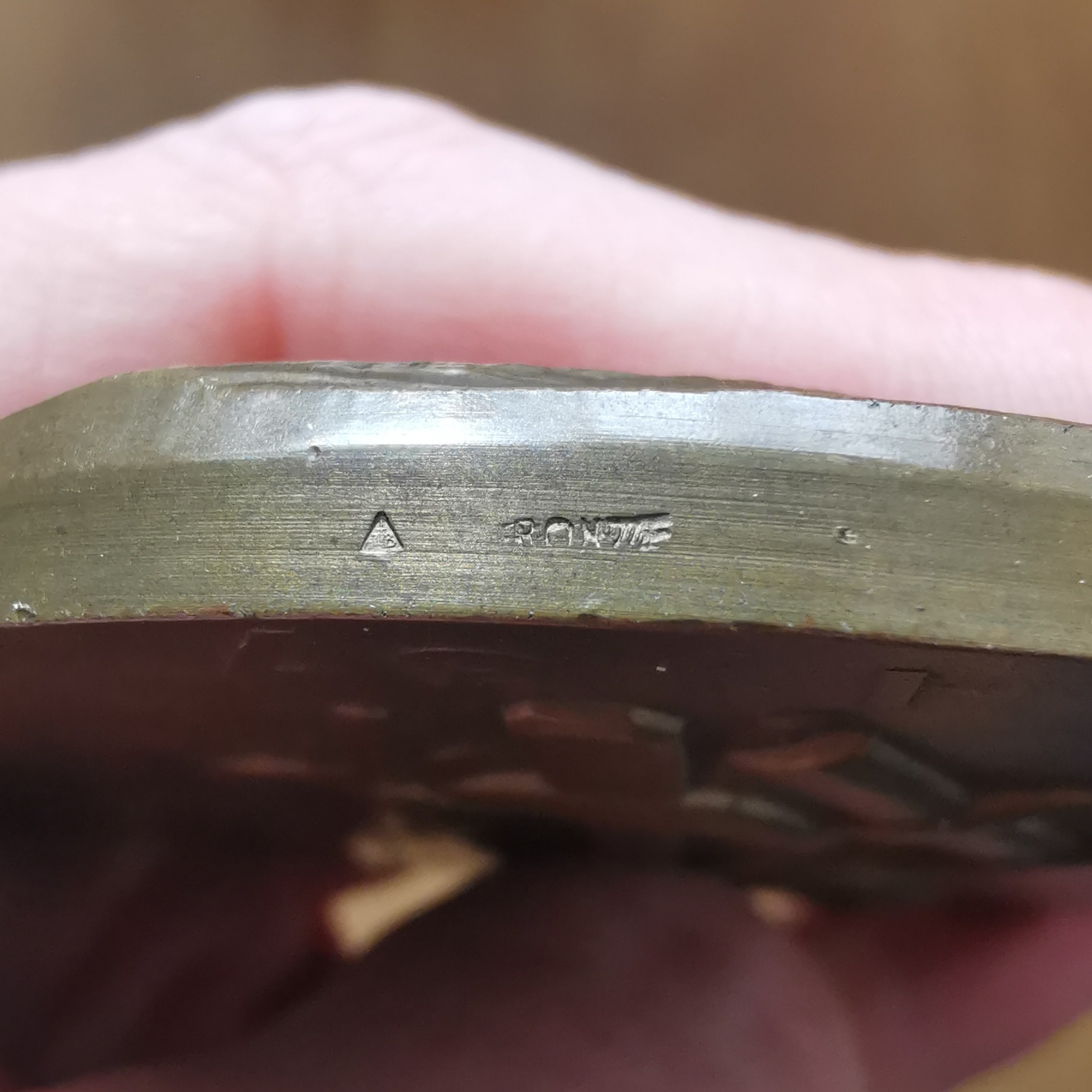Professor Raymond Grégoire Medal – 1937 – signed by Charles Pillet
In bronze
Weight: 220.9 g
Diameter: 76.5mm
Obverse:
Profile bust to the left of Professor Raymond Hippolyte Alphonse Grégoire (Lyon 1875 – Paris 1942), French surgeon (see biography at the end of the description).
Circular inscription: PROFESSEUR RAYMOND GREGOIRE
Signature:
CH. PILLET
1937
Reverse:
Painter’s palette and brushes , mallet and Aesculapian snake .
1937
Vertical inscriptions:
CONSILIO MANUQUE (meaning “To be valuable through advice and execution. (To be both the head and the arm.)”)
Edge:
Triangular punch + BRONZE
Biography (source: Committee for Historical and Scientific Works):
Raymond Grégoire is a French surgeon.
Born in Lyon, Raymond Grégoire came from a family of Parisian origin. His father, Marie Léopold Grégoire, was an industrialist. His mother, Alexandrine Blanche Joséphine Delpech, was a very distinguished woman with artistic tastes: a painter and enamel artist, she passed her tastes on to her children. Raymond Grégoire was the eldest of 5 brothers and sisters. One of his brothers, a Grand Prix de Rome d’Architecture, was killed during the Great War on October 29, 1914. During his career, he became friends with Heitz-Boyer, Pierre Duval and Paul Algave. His teachers were Auguste Boca, Faisans, Merklen, Guyon and, above all, Lucien Picqué and Paul Poirier.
Raymond Grégoire studied with the Dominicans in Arcueil. At the age of eighteen, Grégoire did his military service and upon his return enrolled in the Faculty of Medicine. His father died when he was twenty, before he was accepted into the internship. He then had to make great efforts not to be a burden on his mother, who was left penniless. In 1899, he was appointed intern at the Hospitals and entered Guyon’s department. Then, he was appointed anatomy assistant and prospector at the Faculty.
Raymond Grégoire became a surgeon at the Paris Hospitals and an agrégé d’anatomie in 1911. He was mobilized during the First World War as a chief physician in a surgical formation at the front, operating day and night and exerting himself to the point of overwork. In 1916, he held the rank of 2nd class territorial major physician in a self-surgical ambulance. After the war, Grégoire became head of the pediatric surgery department at Bretonneau, then of a general surgery department at Tenon. In 1924, he was a 1st class major physician for the military government of Paris. In 1930, he was appointed Professor of Surgical Anatomy and Surgical Technique at the Faculty of Medicine of Paris and, in 1933, he took over the Chair of Surgical Clinic at the Saint-Antoine Hospital, where he gave remarkable teaching that attracted both well-known surgeons and young students.
Raymond Grégoire published many works, as an anatomist and surgeon. He studied with great precision the radiocarpal joints and their physiology, the testicular lymph nodes and their invasion in cancer, the vessels of the kidney. He made a very useful contribution to the improvement of war surgery through his work on primitive suture, the problems of shock, lung wounds. Later he published, in collaboration with Courcoux, an important work on Pleural and Lung Wounds. We must also recall all of his research on arteriovenous aneurysms. He was interested in blood diseases, in particular haemogeny, he studied the indications and technique of splenectomy in splenomegaly, haemolytic jaundice, blood diseases. His far-reaching research on serous and hemorrhagic visceral apoplexies, with particular application to intestinal infarction, was published in collaboration with Roger Couvelaire. He also worked on esophageal surgery. He is the author of several educational works, such as Précis d’Anatomie, with numerous diagrams that he published with Serge Oberlin, or l’Anatomie médicochirurgicale de l’abdomen, in three volumes.
Raymond Grégoire was elected member of the Academy of Medicine for the surgery section on November 23, 1937. He was also secretary of the French Association of Surgery for eight years. In 1937, he chaired the Congress of Surgery.
In the Legion of Honour, he was raised to the successive ranks of knight in 1916 and officer in 1924. He was also decorated with the Croix de Guerre.









